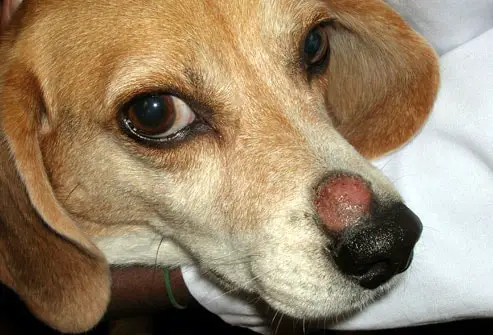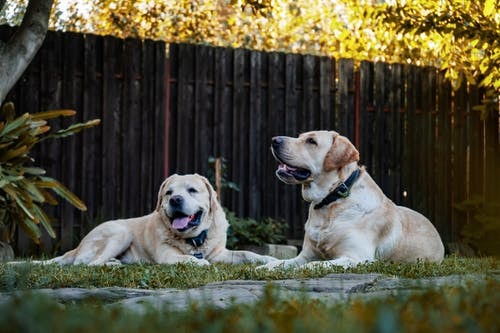Ringworm in dogs is a fungal infection of the hair, skin, or claw. Species of keratinophilic fungi cause the disease. In cats, the fungus commonly implicated is Microsporum canis, and in dogs are Microsporum canis and Microsporum gypsum. Other common fungal agents include Trichophyton spp. A cell-mediated and humoral immune response is elicited after infection. The inflammatory reaction leads to increased epidermal proliferation. Ringworm is one of the common dog diseases that frequently hamper you if you are not taking adequate measures.
Transmission of Ringworm in Dogs
In dogs, ringworm is transmitted between animals or to persons from animals by direct contact or by indirect contact with infected scale and hair in the environment or on fomites. In most cases of Trichophyton infections, dogs are suspected of being exposed by contact with rodents or their nests. M. gypseum is a geophilic organism that inhabits fertile soil. Dogs are exposed to this organism by digging and rooting in contaminated areas. Infections with anthropophilic species are acquired as reverse zoonoses by direct contact with infected persons. The disease is not specific to a certain dog breed.

Symptoms of Canine Dermatophytosis
The disease is more common in very young or old animals, immuno-suppressed animals, and cattery situations. The lesions may include pustules, papules, and draining tracts. Skin lesions in dogs tend to be localized, but there are marked individual variability in the degree of inflammation and alopecia. The classic “ringworm” lesion consists of a variably erythematous, circular patch of alopecia and scaling which spreads peripherally and heals centrally and is usually associated with M. canis in dogs.

Kerion is one form of ringworm in dogs with deep, suppurant inflammatory lesions that present as a single or multiple nodules often caused by M. gypseum. Cigarette-ash like crust may form in this disease. Secondary staphylococcal infection may complicate any type of lesions. The symptoms include sharp, brittle claws, inflamed and scaly skin, circular areas of hair loss, dog allergies, dry and brittle hair. In this condition, you must have to contact your veterinarian.

Diagnosis of Ringworm in dogs
Diagnosis is based upon characteristic clinical signs and demonstration of fungal elements in skin or hair using direct light or fluorescence microscopy, wood’s light examination, culture, or histopathological examination of skin biopsy specimens. In dogs, ringworm is an overdiagnosed disease when clinical signs or color changes on the dermatophyte test medium(DTM) are used alone.

Once hair or scale applied to fungal culture media exhibits non-pigmented colony growth concomitant with red color change, it must be identified microscopically to confirm the presence of dermatophyte. Nondermatophyte may cause red color change similar to dermatophyte. Identification of ringworm assists the veterinarian, the client, and the patient in the following ways-
- It avoids a false-positive diagnosis of Dermatophytosis and unnecessary treatment.
- The source of ringworm may be identified and removed or treated, and the potential need for environmental decontamination can be evaluated.
- Along with signalment and clinical presentation of the patient, ringworm identification guides the selection of appropriate therapy-systemic and topical or topical alone.
- The culture of hair on DTM is recommended for all dogs with evidence of primary lesions. The culture of tissue is recommended when the fungal or hyphal structure is present in tissues but can not be readily identified by histopathologic examination and culture of hair or scale.
Differential diagnosis of Canine Dermatophytosis
The disease is confused with regional/generalized lesions- demodicosis, superficial pyoderma, immune-mediated diseases, grave mycotic injuries. Focal lesions- superficial pyoderma, demodicosis, defects in keratinization, alopecia after injection. You must consult with your vet for confirmatory diagnosis by laboratory and serological means.

Treatment and Prevention of Ringworm in Dogs
The infections resolve within 1-3 months. However, some diseases, especially those caused by Trichophyton spp. are often very persistent. A combination of clipping, systemic, and topical therapy is most appropriate. Localized lesions in dogs should be clipped to a margin of 5 cm to remove infected hairs, and whole-body clips should be considered if lesions are generalized.

Final Advice on Ringworm in Dogs
Ringworm or canine dermatophytosis is a widespread problem that will bother you many a time. It is a contagious and zoonotic disease that may affect other dogs, cats, and even if you are taking adequate measures. You must keep your kennel, dog’s house, litter box, and playground clean. Avoid contact with infected dogs and the environment. You must inform your vet immediately after noticing the lesions or symptoms of ringworm in your dogs.